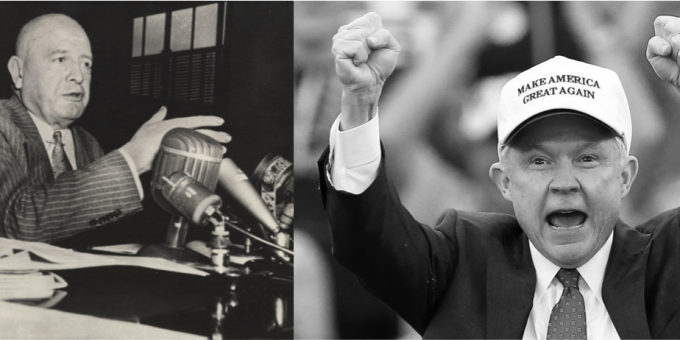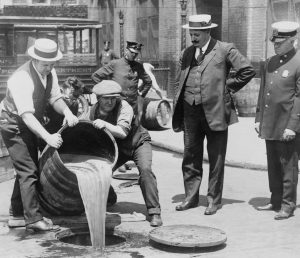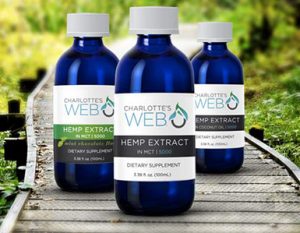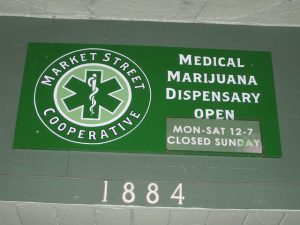
Harry Jacob Anslinger, Jeffrey Beauregard Sessions III
Marijuana’s Moral Entrepreneurs, Then and Now
Today, more than one in five U.S. adults live in a state where they can walk into a store to purchase recreational marijuana products, ranging from delta 8 THC gummies to potent flavored delta 8 THC carts popular in California in Texas. But in that transaction, buyers and sellers are caught in a strange legal limbo. According to state laws, they are not committing any crimes, even though they are simultaneously violating federal drug laws. During the Obama administration, the Cole Memorandum directed the Department of Justice (DOJ) to avoid using federal resources on marijuana violations when sales complied with state law. Under Attorney General Jeff Sessions, appointed in 2017, the fate of the Cole Memo is newly uncertain. Despite trends in expert and popular opinion advocating drug policy reform, the DOJ has signaled that it may reinvigorate the criminalization of marijuana users.Questions about the status of marijuana policy changes follow a renewal of rhetoric favoring criminal penalties tied to marijuana use, particularly in Sessions’s public statements that have echoed earlier marijuana-related moral outrage from Harry J. Anslinger, the former commissioner of the Federal Bureau of Narcotics (FBN). Of course, there are important contextual differences, especially a much higher prevalence of marijuana use in the present day and drastic differences in the ways media now operate. Whether Sessions’s rhetoric mobilizes resources and public opinion toward his cause as effectively as Anslinger’s did remains to be seen, but the parallels in their rhetoric highlight this possibility.
Marijuana and Morality
Sociologist Howard Becker coined the phrase “moral entrepreneur” to refer to individuals who use the strength of their positions to encourage others to follow their moral stances. Moral entrepreneurs are the “rule creators” who typically argue that their cause is for the betterment of individuals and society and whose vested interest in that cause maintains their political power or position (for more, see Craig Reinarman’s 1994 book chapter on “The Social Construction of Drug Scares”). By creating rules, which they argue reflect proper morality, moral entrepreneurs construct deviance and contribute to the labeling of rule breakers as social “outsiders.”In Becker’s classic study, Outsiders, he identified drug laws as a central arena in which moral entrepreneurs operate. Relying on the belief that substance use is immoral, such individuals have crafted strong anti-drug legislation and enforcement practices in the U.S. Perhaps the most well-known anti-drug moral entrepreneur was Harry J. Anslinger, who in his role as Commissioner of the FBN (a predecessor of the DOJ’s Drug Enforcement Administration) shifted from uniform state-level policy implementation to wage a campaign to criminalize marijuana at the federal level. Anslinger championed the passage of the federal Marihuana Tax Act of 1937, which effectively criminalized marijuana throughout the country, and went on to crusade against cannabis in ways that contributed to popular perceptions that the drug was highly dangerous, addictive, and caused great social harm. He helped set the stage for the federal government’s eventual classification of marijuana as a Schedule I drug via the Controlled Substances Act of 1970—where it remains to this day, alongside heroin (and higher on the list than cocaine and methamphetamine). Schedule I drugs are defined as those with high addictive potential and no medical utility, and they may not be possessed or prescribed under federal law. The enforcement of federal drug policies from Anslinger and beyond have contributed to major shifts in American society, such as an expansion of criminal justice supervision, which disproportionately affects racial minorities.

More recently, we have seen rising public support for the legalization of marijuana (see Contexts, “Viewpoints: It’s High Time,” Fall 2015) and a major transformation in state-level marijuana policies. As of fall 2017, eight states and the District of Columbia permit recreational marijuana use, and a majority of states allow medical marijuana in some form. Recent polls put support for legal recreational marijuana above 60% (see Beau Kilmer and Robert J. MacCoun’s 2017 article, listed in the recommended readings). Despite these shifts, A.G. Sessions has publicly condemned both the policy changes and marijuana use in general, revisiting arguments about danger and criminality used in the past. Here, we consider the parallels in Anslinger and Sessions’s rhetorical strategies by analyzing the content of their documents, speeches, and statements.
In evaluating the contexts of their efforts to persuade, these men can be characterized as moral entrepreneurs. First, each promoted his belief that individuals and society are corrupted by marijuana use. Second, each maintained a vested interest in sustaining bureaucratic organizations that would enforce those rules–Anslinger invested in the new FBN and Sessions invested in continued drug control support within the DOJ. Third, Anslinger and Sessions were each entrepreneurial during times when marijuana could be purchased in some locales without criminal punishment and when dedication to increasing criminal justice spending was questioned. Anslinger was working in the context of the failure of alcohol prohibition and Sessions has taken office as mass incarceration and policing practices are being called into question. In terms of actual entrepreneurial tactics, we show how the strategies used by Anslinger to advocate for, promote, and justify marijuana criminalization are now similarly deployed by Sessions to promote maintaining criminalization even as state governments and the general public move in the opposite direction.
Marijuana Entrepreneurship in Two Time Periods
To review Anslinger’s rhetoric on marijuana, we analyzed speeches, correspondence, and authored statements found in the H.J. Anslinger Papers located at the special collections libraries of the Pennsylvania State University, and, for Sessions, we conducted a content analysis of speeches, statements, and official press releases found in a variety of sources (the DOJ official news archive, C-SPAN, the Associated Press, the Washington Post, and Politico). We focused on Sessions’s statements rather than the wider coverage attributed to them, and we identified three major themes of moral entrepreneurship put forward by Anslinger and Sessions. (The sources for each quote are available on Mike Vuolo’s website.)

The first theme is discounting contrary evidence. In particular, Anslinger and Sessions were quick to dismiss scientific evidence that did not support their moral stances on marijuana. For example, in a Treasury Department Memorandum, Anslinger refuted doctors and scientists who concluded that marijuana was low-harm, stating, “Despite the fact that medical men and scientists have disagreed upon the properties of Marihuana, and some are inclined to minimize the harmfulness of this drug, the records offer ample evidence that it has a disastrous effect upon many of its users.” Anslinger also frequently undermined the validity of studies that minimized the danger of marijuana by citing specific instances or cases in which doctors, scientists, or legal professionals documented negative effects of marijuana. For example, responding to a doctor who had written him to argue in 1937 that marijuana was not inherently dangerous, Anslinger listed several cases of marijuana causing insanity and crime and closed his letter by writing, “I find that the conclusions reached by persons who have had practical experience with the drug present a much stronger case against Marihuana than those formed by a study of literature on the subject.”
Echoes of this logic can be seen in Sessions’s 2017 statement, “I think medical marijuana has been hyped, maybe too much.” Sessions has vocally dismissed published scientific evidence in journals such as the Journal of the American Medical Association showing that opioid addiction and overdoses are lower in states that allow medical and recreational marijuana. To the National Association of Attorneys General in February of this year, Sessions declared, “Marijuana is a cure for opiate abuse. Give me a break. This is the kind of argument that’s been made out there to just—almost a desperate attempt to defend the harmlessness of marijuana or even its benefits. I doubt that’s true. Maybe science will prove I’m wrong.” And to law enforcement in March, he said, “I’m astonished to hear people suggest we can solve our heroin crisis—have you heard this?—by having more marijuana. I mean, how stupid is that? Give me a break. So we’re going to have to stand up and confront that, tell the truth here. And our nation needs to say clearly once again that using drugs is bad, that it will destroy your life.” For both men, a moral stance on marijuana outweighs any evidence to support policy changes, even for medicinal marijuana. Sessions’s statement came just two months after the National Academy of Sciences released the most comprehensive report ever on cannabis, which stated that there was “conclusive evidence” that marijuana can alleviate chronic pain.Moral entrepreneurs like Anslinger and Sessions have a unique place: they occupy a bully pulpit that amplifies their moral positions, while attempting to strengthen the position of the bureaucracy they run.In the second theme, both men perpetuate the claim that marijuana causes violence. Anslinger is well-known for using imagery of violence to gain support for marijuana’s original criminalization. In an oft-cited 1938 Reader’s Digest article, “Assassin of Youth,” he stated, “There must be constant enforcement and constant education against this enemy, which has a record of murder and terror running through the centuries.” Anslinger collected reports of crime and violence allegedly committed by those using marijuana, and his public statements regularly pushed this claim. In the Treasury Department memo noted above, he also stated, “Recently we have received many reports showing crimes of violence committed by persons while under the influence of Marihuana.” In a 1936 speech, he added concerns about insanity to descriptions of violence: “We are daily receiving reports of its abuse, and of violent crimes committed by persons while under its influence. Its user is quickly reduced to insanity.” And in a 1938 FBI Law Enforcement Bulletin, Anslinger was explicit about the crimes associated with marijuana use: “I am surprised to learn that certain police officers have been inclined to minimize the effects of the use of Marihuana. These officers should review some of the cases that are reported to the Bureau. They would, I am sure, be convinced that the drug is adhering to its old world traditions of murder, assault, rape, physical demoralization and mental breakdown. A study of the effects of Marihuana shows clearly that it is a dangerous drug, and Bureau records prove that its use is associated with insanity and crime.”
Sessions has also linked marijuana to violence as Attorney General, though more obliquely. For example, in February 2017 he told reporters at the DOJ about legal recreational marijuana, “Experts are telling me there’s more violence around marijuana than one would think and there’s big money involved. You can’t sue somebody for drug debt. The only way to get your money is through strong-arm tactics, and violence tends to follow that.” This line of reasoning is particularly unusual given that it applies to illegal marijuana markets, and the DOJ has the power to change the rules around legal marijuana to alleviate these concerns. He went on to more explicitly link violence to use, stating, “I believe it’s an unhealthy practice, and current levels of THC in marijuana are very high compared to what they were a few years ago, and we’re seeing real violence around that.” In this manner, connections of marijuana use to violence have resurfaced even though, in parallel with claims made by Anslinger, they are supported by little empirical evidence.The final theme is positioning marijuana as a dangerous substance, via unsubstantiated evidence and linking it to substances such as heroin and cocaine. Considering the Schedule I classification of heroin and marijuana, Anslinger’s rhetoric had a lasting effect. “Therefore, from the standpoint of police work, it is a more dangerous drug than heroin or cocaine,” he said in 1938. In response to a doctor arguing that the negative effects of marijuana had been overstated, Anslinger quoted Judge Symes, who handed down the first conviction under the 1937 Marihuana Tax Act: “I consider marihuana the worst of all narcotics—far worse than the use of morphine or cocaine. Under its influences, men become beasts… Marihuana destroys life itself.”
Although not quite as extreme, Sessions, too, labels marijuana as a dangerous drug, making connections to heroin and cocaine. Appearing on The Hugh Hewitt Show in March 2017, he said, “I think it’s a more dangerous drug than a lot of people realize.” In some instances, his arguments suggest marijuana use will lead to hard drug use, while in others, the dangers of marijuana are comparable to those of hard drugs. Just a few months before his nomination as A.G., Sessions stated of legalization, “We need grown-ups in charge in Washington saying marijuana is not the kind of thing that ought to be legalized, it ought to be minimized, that it is in fact a very real danger… And you’ll see cocaine and heroin increase more than it would have, I think.” In his most explicit rhetorical statement comparing marijuana’s level of danger to that of heroin, Sessions said, “And I am astonished to hear people suggest that we can solve our heroin crisis by legalizing marijuana—so people can trade one life-wrecking dependency for another that’s only slightly less awful.” Sessions deploys multiple arguments linking marijuana to the dangers of harder drugs, contradicting evidence to the contrary by simply erasing it.
Does Sessions’s Rhetoric Matter?
As described above, Anslinger’s rhetoric was an effective component of the drive to criminalize marijuana, and it had lasting effects on public opinion, legislation, and the role of drug laws in mass incarceration. Anslinger aimed to achieve status and influence, a personal motive since early in his career in the Foreign Service, through his position as commissioner of the FBN. He also sought to solidify an expanded criminal justice system of former Prohibition agents under his command by creating a new target for their concern. But does Sessions’s similar rhetoric matter in an environment of changed public opinion and legalization? The most pressing question concerns how Sessions will handle the states that have already legalized marijuana. As a key part of moral entrepreneurialism, Sessions has a vested bureaucratic interest in continued marijuana criminalization, as it serves to substantiate part of the DOJ budget, legitimizes police power, and continues to provide inmates to fill the privatized prison industry, in which the DOJ has expressed interest in renewing support. In the budget passed by the U.S. House of Representatives in May 2017, funding the federal government through September 2017, the DOJ was allocated none of Sessions’s requested funds to fight state marijuana laws. This could be an indication that Sessions’s replication of Anslinger’s rhetorical strategies has not yet worked to enhance control of marijuana. At a minimum, the effort to use moral entrepreneurial strategies to enhance the bureaucratic control over this domain has failed thus far.
The lack of additional funding, however, does not preclude the DOJ from using its existing resources to pursue those involved in legalized recreational or medical marijuana in states that allow it, with Sessions stating in January, “I won’t commit to never enforcing federal law.” Weeks after being denied marijuana-specific funding in the federal budget, Sessions announced a rollback of the recent relaxation in mandatory minimum sentencing for drug offenses, instructing prosecutors to, “charge and pursue the most serious, readily provable offense.” Though the statement applied to all drugs, Sessions implicitly linked this use of current DOJ resources to recreational marijuana, adding, “We’re on a bad trend right now. We’ve got too much complacency about drugs. Too much talk about recreational drugs.”
Together with these actions, Sessions’s rhetoric has the potential to halt the spread of legalization should it change public opinion (for example, in states that use referendums) or discourage state legislatures from considering less strict marijuana laws, potentially inhibiting criminal justice reform. Legalization is not a forgone conclusion, and some states have seen failed referendums on recreational legalization (Ohio in 2015, Arizona in 2016). More to the point, the legal contradictions between federal and state policy are unlikely to change, as the DOJ’s Drug Enforcement Administration has the final say in drug scheduling, even when the Department of Health and Human Services recommends rescheduling. Thus, through Sessions’s rhetoric, the possibility that the federal government could step in to stop legalized marijuana could scare off state legislatures, particularly in the 25 states that lack popular referendums. In 2017, the Vermont General Assembly became the only state legislature to legalize recreational marijuana, but the state’s governor vetoed this bill, stating, “I’m not sure the time is right now.”
Sessions’s success in the other component of moral entrepreneurship—defining marijuana use as immoral—is currently unknown. The critical issue is whether that “immoral” label is attached only to the behavior, or whether users also become an immoral class. In our thematic analysis, Anslinger tended to attach immorality to the substance and the resultant behavior, such as crime, violence, and insanity. That is, marijuana made people immoral. By contrast, Sessions has made statements that imply the reverse—that immoral people use marijuana. For instance, at the April 2016 Senate hearing noted above, Sessions stated, “Good people don’t smoke marijuana.” Thus, even if Sessions’s rhetoric does not affect current or future policy, it has the potential to attach an immoral label to individuals who are otherwise law-abiding citizens, or actually are law-abiding according to state law in legalized states. In contrast to the environment of Anslinger when the number of marijuana users was relatively low, such statements affect millions of Americans today. His rhetoric could push marijuana users, even if using the drug medicinally, into the shadows for fear of stigma associated with its use.We do not intend to imply that these particular rhetorical themes are the only element leading to marijuana criminalization. Other factors certainly play a role. In fact, our Anslinger analysis is part of a larger study of the role of racial and ethnic scapegoating during the push to criminalize marijuana. Still, moral entrepreneurs like Anslinger and Sessions have a unique place: they occupy a bully pulpit that amplifies their moral positions, while attempting to strengthen the position of the bureaucracy they run. Of course, the media environment within which Sessions operates is very different, too. While Anslinger carefully cultivated the media’s coverage of marijuana, numerous sources offer different viewpoints on marijuana that potentially dilute Sessions’s rhetoric. Further, many more Americans have personal experience with marijuana in contemporary society; their experiences may counter Sessions’s statements. But still, his rhetoric could have an impact, as the current administration is particularly adept at dismissing alternative viewpoints as “fake news,” of which our theme of discounting contrary evidence can be seen as a subset. Whether Sessions’s repetition of Anslinger’s themes will be met with similar success in an era of loosening marijuana regulation remains to be seen.
Recommended resources
Howard Becker. 1963. Outsiders: Studies in the Sociology of Deviance. New York: Free Press. In which Becker coined the term moral entrepreneur, elaborating on the definition and describing how the criminalization of drugs, including marijuana, was due in part to such individuals and organizations.
James M. Cole. 2013. Guidance Regarding Marijuana Enforcement. Washington, DC: Department of Justice, Office of the Deputy Attorney General. Better known as the “Cole Memorandum,” this communication provides guidance on how the federal enforcement by the DOJ of the Controlled Substances Act (CSA) should proceed in states where marijuana policies are at odds with the CSA.
Beau Kilmer and Robert J. MacCoun. 2017. “How Medical Marijuana Smoothed the Transition to Marijuana Legalization in the United States,” Annual Review of Law and Social Science. A terrific overview of how public opinion and public policy regarding marijuana have changed so rapidly.
National Academies of Sciences, Engineering, and Medicine. 2017. The Health Effects of Cannabis and Cannabinoids: The Current State of Evidence and Recommendations for Research. Washington, DC: The National Academies Press. Considered the most comprehensive study of the effects of marijuana ever conducted, providing point-by-point summaries of research.
David F. Musto. 1999. The American Disease: Origins of Narcotic Control, Third Edition. New York: Oxford. A foundational work on the history of drug prohibition in the U.S.
Craig Reinarman. 1994. “The Social Construction of Drug Scares,” pp. 92-104 in Patricia A. Adler and Peter Adler (eds), Constructions of Deviance: Social Power, Context, and Interaction. Belmont, CA: Wadsworth. Argues that drug scares and anti-drug crusades are recurring themes in U.S. history and identifies seven “ingredients” for the former.

Comments 1
Stephen AZ
September 21, 2017Very excellent article, in my opinion. The utilization of Howard Becker's moral entrepreneurs methodology is great. I wish you went into Charlottte's Web more, and discussed how it had little to no THC, but has reduced the little girls seizure rate substantially (according to reports). A short video would have been better...people would see that and remember the movie Lorenzo's Oil. Just my opinion, I have a degree in crim justice so I think your article was well done.